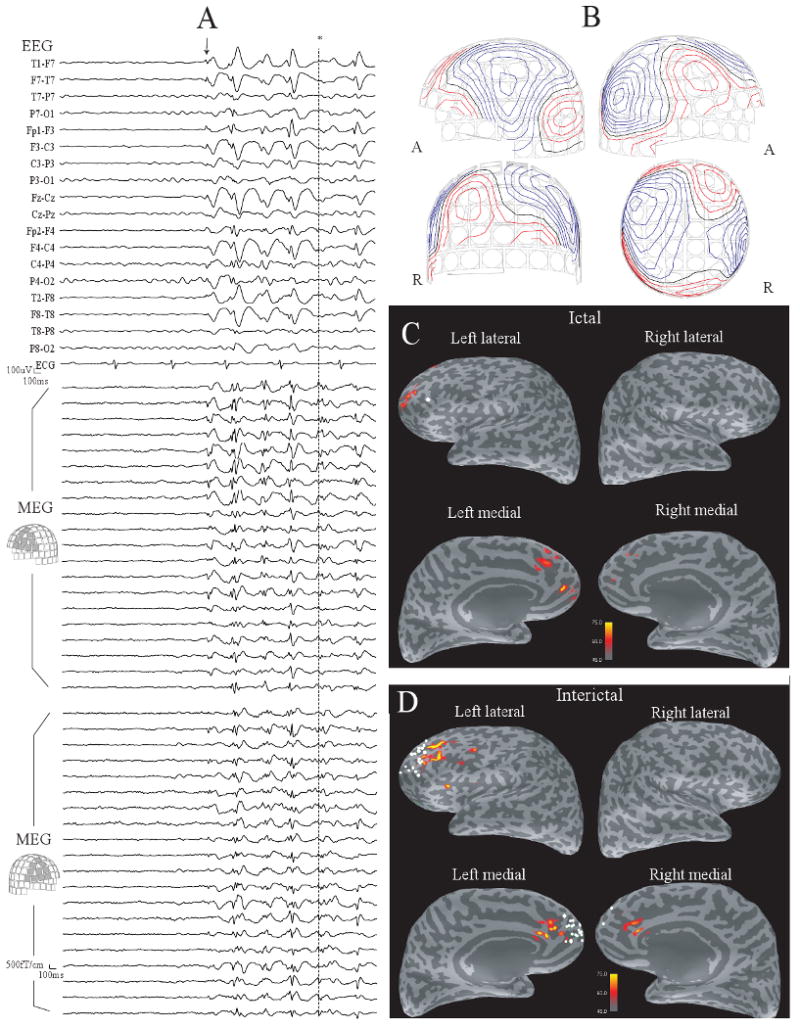Fig. 1.

(A) The early part of ictal MEG and EEG in Patient 1. Rhythmic spike-and-slow-wave complexes are seen in the bilateral frontal areas after the point shown by an arrow. (B) Contour maps of magnetic fields at the peak of the MEG spike shown by * in (A). (C) The dSPM map at the same peak. The map are displayed on the inflated cortical surface, with darker gray indicating cortex buried in the sulci, and lighter gray indicating gyral cortex. Activation is seen in the left anterior frontal lobe. One ECD with GOF > 70% is obtained from seven ictal spikes (a white dot). (D) A dSPM map at the peak of a typical interictal spike. Activation is seen in a large part of the left frontal lobe and the right frontal lobe. ECDs with GOF > 70% obtained from interictal spikes (white dots) are distributed in bilateral frontal lobes. Note that the dSPM maps shown here are obtained from a single spike and ECDs are calculated from each individual spike.
